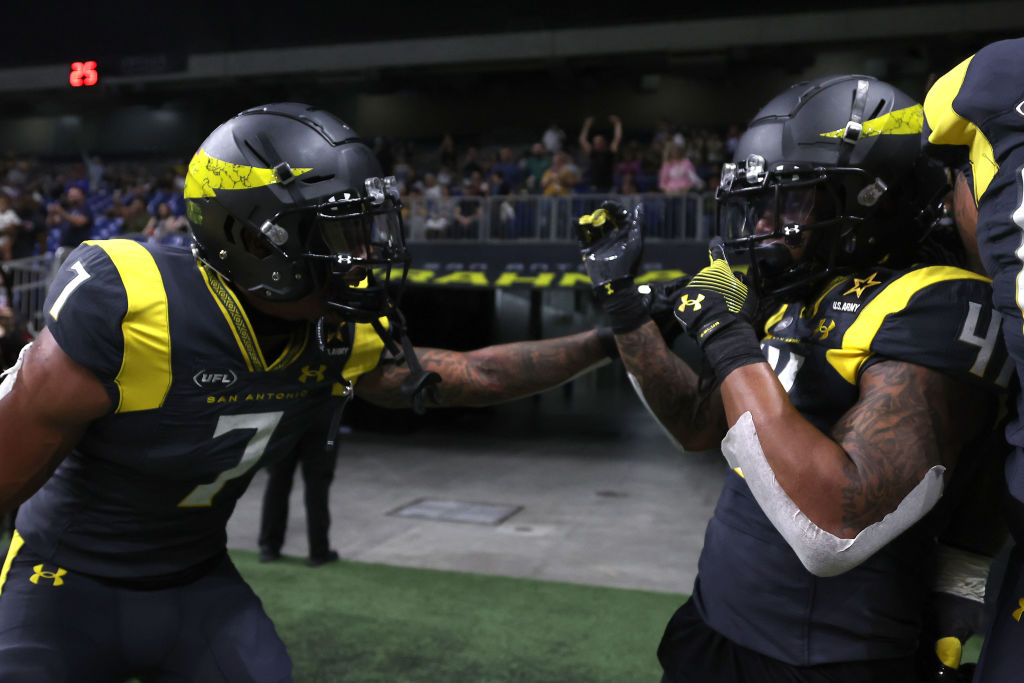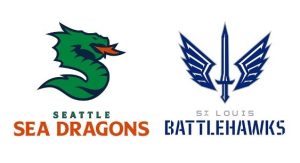
My “Three up, three down” column will appear weekly on UFL Board during the season, taking note of positives or things that are happening often (“up”) as well as negatives or rarities (“down”).
Up: Home teams taking the ball
More often than not, NFL teams choose to defer when winning the coin toss instead of opting to receive the opening kickoff. The UFL has ditched the coin toss, allowing the home team of each game to determine whether to kick or receive. In week one, three of the four teams chose to receive, with only Houston preferring to have the first possession out of halftime. It’s a departure from the norm for sure. The theories for doing this could range from teams wanting to make a statement and get on the board early, to wanting to get the home crowd into the game immediately, to wanting cold offenses to be able to get into a rhythm quickly. This will be something to track through the rest of the season.
Down: Luis Perez offensive systems
It was noted on the television broadcast that this is the first season in which Luis Perez hasn’t had to learn a new offensive system since college. The nomadic Perez is on his sixth pro football league, making himself attractive to teams based on his ability to process the new system and his leadership skills as much as his on-field play. Perez is back for a second season with offensive coordinator Chuck Long, who was co-coordinator with Jonathan Hayes last season. Though Hayes, the play caller, is gone, the system remains largely the same.
Up: Chippiness
Training camp is long with a limited amount of physicality built in so that players don’t get injured prior to the beginning of the season. Nowhere was this more evident than in week one, when it seemed like players were thirsty for contact. It went beyond that even, as each game featured pushing and shoving well after the whistle. In D.C. vs. San Antonio, Defenders right tackle Jean Delance was ejected for spitting at an opposing player. There’s value in having players operating as if it may be the last time they’re ever on a football field again, and that feeds into the league’s narrative about these players. Yet the post-play action needs to be carefully policed to prevent unnecessary injury and so that the game doesn’t devolve into something that would reflect poorly on the UFL.
Down: Plugged-in announcers
The UFL was not going to get the A-team announcers for Fox and ESPN, though many returned from the USFL and XFL last season. And no, there was no Tom Brady, either, despite suggestions from some fans that Fox should use him on UFL broadcasts to prep him for his first NFL season behind the mic. Just like UFL teams, the announcers seemed to be ironing out the kinks in week one. During the Arlington vs. Birmingham broadcast, Lindsey Scott converted a two-point attempt after a touchdown by throwing to Isaiah Winstead just over the goal line. For some reason, play-by-play man Curt Menafee was looking at a tight end falling in the back of the end zone and thinking he had caught it. Then, mere minutes into the second game of the day, Kevin Kugler declared, “there are no kickoffs in the UFL” (he meant coin tosses), and color commentator Devin Gardner referred to the Battlehawks as the “Blackhawks” (twice!). The ESPN crews seemed to find smoother sailing on Sunday.
Up: PAT scores
While touchdowns were not scored at a frenetic pace in week one, success was found in converting point-after opportunities. Teams were 4-for-6 in executing one-point plays from the two-yard line; 5-for-7 on two-point plays from the five-yard line; and 0-for-1 on three-point plays from the 10-yard line. In keeping this play from the XFL, the league wanted to create additional strategic options for head coaches and to make deficits easier to make up. The idea that “no lead is safe” is evident in the UFL.
Down: Running room
It did not come as a surprise that teams struggled to run the ball in week one; this seems to happen early on in each spring league season. Arlington averaged just 3.3 yards per carry against Birmingham. The Stallions were the outlier on the ground – big surprise – running for 183 yards, though 77 yards came via the legs of their quarterbacks. Wes Hills shredded the St. Louis defense for 7.7 yards per carry on 11 totes. St. Louis, however, could muster just 62 yards on the ground. In San Antonio, Anthony McFarland ran well but his backup, John Lovett, did not. The Brahmas had just 75 rushing yards. Without Abram Smith, D.C. running backs accumulated just 30 yards. The leading rusher for both Memphis and Houston were quarterbacks on scrambles, as backs averaged a grotesque one yard per carry combined in that game. As offensive lines gel, running games should improve.













